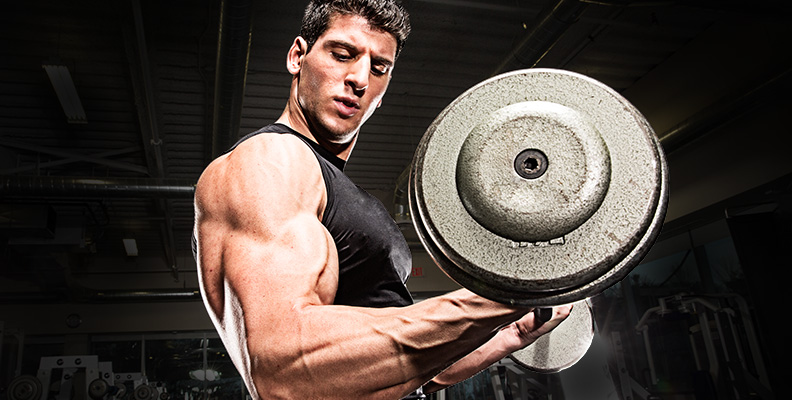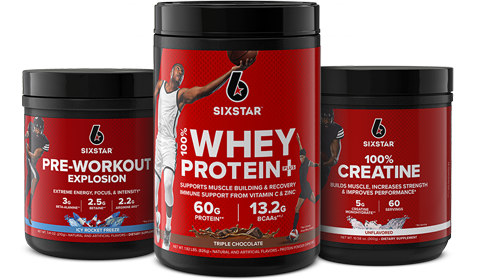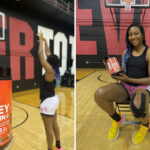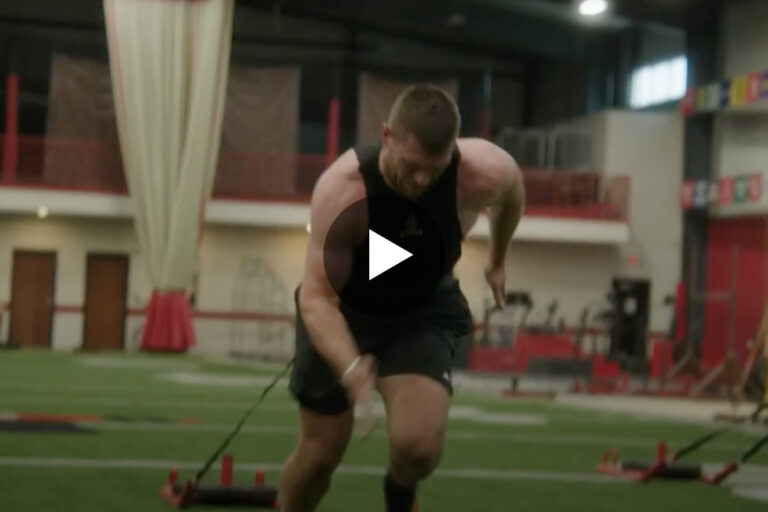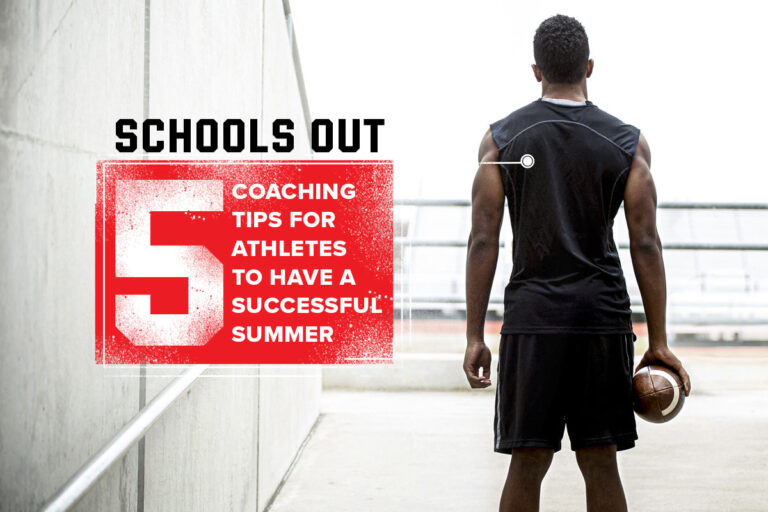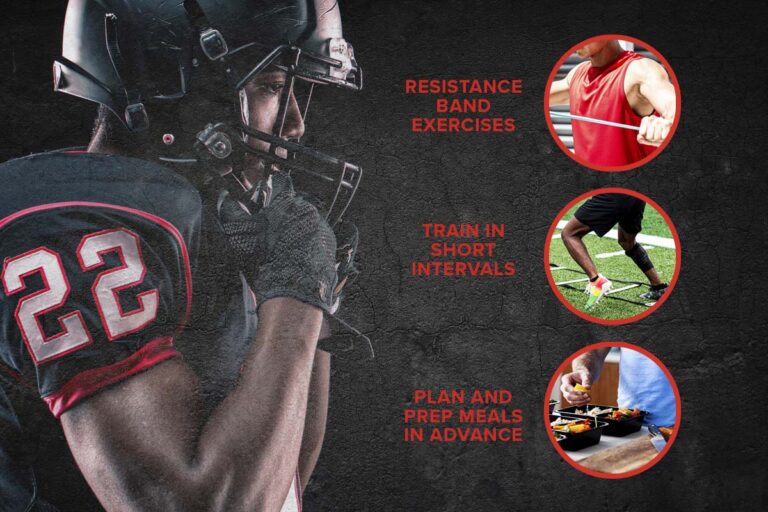1. FOCUSING TOO MUCH ON ACCESSORY MOVEMENTS
Many people tend to spend too much time focusing on isolation movements like bicep curls and chest flies. Movements that isolate small muscle groups should be treated as accessory movements, while compound lifts that engage multiple muscle groups at the same time, like the bench press, deadlift, squat, pull-up and overhead press should be the primary focus of your training. You should always start your training off with the heavy compound lifts that allow you to activate a larger amount of muscle fibers and elicit a more powerful hormonal response than isolation movements. Accessory movements should be done toward the end of your workout to create a “pump” to drive nutrient-filled blood into the muscle in order to encourage growth and recovery.
Begin your training with compound movements in lower rep ranges and higher amounts of sets (e.g. deadlift for 5 sets of 3 reps), and finish with your accessory work in high rep ranges with a low number of sets (lat pull-down for 3 sets of 12 reps).
2. CORE TRAINING
Whether you are training for aesthetics, functionality or both, a strong and powerful core is extremely important. Your core is a complex group of muscles that makes up much more than just your abs. It includes all of the muscles from your groin to your chest, both on the front of your body and the back. It is incorporated in almost every movement of the human body.
The main function of the core muscle group is to stabilize the body. Therefore, your core is engaged (if you’re doing the movement correctly) whenever you perform any of the compound movement lifts, like the bench press, deadlift, squat, pull-up and overhead press. These compound movements should be the foundation of your training program, so your core is already doing a significant amount of work without any direct targeting. You only really need to add a few sets of additional core movements to your workouts if you are doing the compound lifts (which you should be!). Focusing too much on core movements can hinder progress on the compound lifts and could be unsafe, as your core will be too fatigued to stabilize you during heavier lifts, like the squat and deadlift, potentially resulting in a serious injury.
Try adding just a few sets of hanging leg raises at the end of your workout to really finish off your core. Simply hang from a pull-up bar at the gym with your arms fully extended, keeping your legs together, and without bending your knees, raise your legs up until they are parallel with the ground, lower and repeat. Taking your legs to parallel is the minimum range of motion for this move. Once you get good at these, try raising your legs all the way up until you touch the bar with your shins!
3. STRETCHING BEFORE A WORKOUT
Many novice lifters make the mistake of performing static stretching before a workout. Static stretching is the traditional style of stretching where you put your body into a position where the muscle is being stretched and then hold that stretch for a period of time. The problem with this is you are lengthening your muscle fibers and actually making them weaker and more susceptible to injury, especially if you are lifting heavier weights in the 1 to 10 rep range. What is known as dynamic stretching is much more beneficial. This involves warming up through movement.
Some examples of this would be performing arm circles by holding your arms fully extended out at your sides and rotating them in circles to warm up your shoulders, back and chest. Do this for 12 reps and then reverse the swing and repeat. To warm up your legs, lean on a wall with one hand and, keeping your leg straight, swing one leg in front of you as far as you can and back down behind you as far as it will go. Perform 12 swings and then switch legs.
4. GOING TO FAILURE
Training to failure is extremely exhausting to your central nervous system. Think of your central nervous system (CNS) as a battery. When you take a set to complete failure, the last rep takes a huge chunk of energy out of that battery, making it very hard to recover in time for your next workout. Many top coaches preach the principle of “leaving one in the tank,” which means pushing yourself just to the point where you could barely get one more rep, and then stopping. This prevents you from becoming overtrained and allows you to continue training hard for the rest of the week without risking injury and illness.
If you find yourself failing with certain weight in the gym that you usually have no problem with, you may already be in an overtrained state. Make sure you are getting enough rest and eating right so you can properly recover. Keeping your protein intake high to rebuild broken down muscle fibers is extremely important. Make sure to take a fast-digesting, high-quality protein source, like Six Star® Whey Protein Plus, immediately after your workout to quickly kick-start your recovery.
5. CHASING TOO MANY GOALS
People train for a variety of different reasons including strength, size, speed and endurance. Many make the mistake of attempting to train for multiple goals at the same time and end up achieving none.
A better approach is to pick a specific goal and devote chunks of time to achieving that goal. For example, try devoting three to four months to gaining serious strength by focusing on the heavy compound lifts while doing limited accessory and endurance work. Then following this period, switch to training for muscle size by lowering the amount of heavy lifting you do and adding higher repetition accessory work. This training cycle protocol will allow you to make progress overall much faster than trying to do everything all at once. The key here is focus; when it comes to training, multitasking simply does not work!
6. NOT FOCUSING ON PROPER TECHNIQUE
Technique is key to a proper workout. Not being focused on how and what you lift can lead to sprains, strains, fractures and other painful injuries that may inhibit your weight training. Little fixes can ensure your workout is not only satisfying, but also safe. First and foremost, especially if you are trying a new move, watch yourself in the mirror and start with a reasonable amount of weight. Once you’re comfortable with the movement, remember to breathe and ensure you’re balanced. Proper technique will ensure you not only target the muscle that you’re after, but it will also prevent imbalances leading to long-term problems.
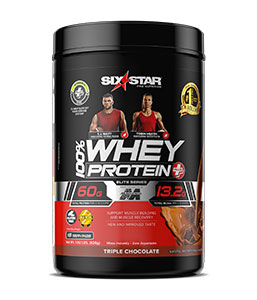
100% Whey Protein Plus
Delivering quality BCAAs, glutamine and creatine, Six Star® Whey Protein Plus provides the delicious premium protein formulas you need to fit any active lifestyle.
